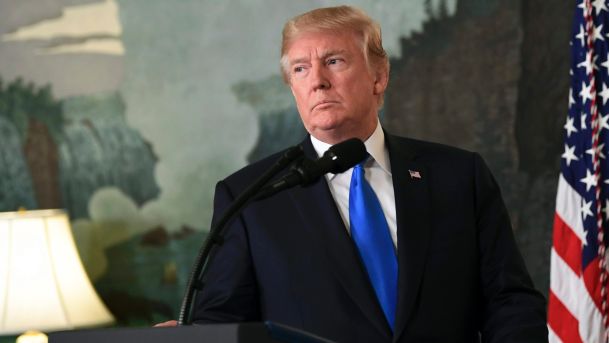Australia/Israel Review
Editorial: Revisiting a flawed agreement
Nov 1, 2017 | Colin Rubenstein

Colin Rubenstein
A country requires three things to create a nuclear weapons arsenal. First, it has to develop the technology and then the infrastructure to make fissionable fuel, either enriched uranium or plutonium. Second, it needs to create a usable weapon design. Finally, it requires a delivery system to deliver the nuclear bombs to their target – in today’s world, almost always missiles.
Supporters of the Iran nuclear deal, also known as the Joint Comprehensive Plan of Action (JCPOA), signed in 2015, will tell you that the deal has halted or paused Iran’s nuclear program. This is just not true. In fact, Iran is apparently continuing to make tangible progress on all three of the requirements for a nuclear arsenal.
On enrichment, under the deal Iran is allowed to continue working on advanced centrifuges, which will vastly speed up its ability to make a bomb. Iranian leaders – including President Rouhani and Iranian Atomic Energy Agency head Ali Akbar Salehi – have been publicly boasting that the IR-8 centrifuges they are currently developing will enrich uranium with 20 times the efficiency of the IR-1s they currently employ. They also say they will test them with uranium as soon as the JCPOA lets them, after 8.5 years, and deploy them in large numbers after ten years. Even US President Obama admitted in 2015 that the JCPOA will allow Iran to develop “advanced centrifuges that enrich uranium fairly rapidly” and because of them, after 13 years or so, Iran’s “breakout times” to a nuclear weapon “would have shrunk almost down to zero.”
Meanwhile, there is good reason to believe that weaponisation work is still occurring at Iran’s military sites – where Iran’s research on nuclear bomb designs is thought to have taken place in the past. Yet these have in practice been effectively exempted from inspections by the International Atomic Energy Agency (IAEA) under the terms of the deal. IAEA head Yukiya Amano recently conceded his agency has been unable to verify Iran’s compliance with Section T of the JCPOA, the clause which prohibits work on weapons construction.
Finally, Iran continues openly to test nuclear-capable missiles, many apparently the result of North Korean technology transfers – exploiting a loophole in the UN Security Council resolution which implements the JCPOA to argue they are allowed.
All of this provides vital context for understanding US President Donald Trump’s announcement on October 13 of his new strategy for confronting Iran’s nuclear program. The core of that strategy is refusing to “certify” to the US Congress, as part of the latest periodic review he is required to make under a US law lifting sanctions, that the JCPOA is stopping Iran’s nuclear progress and is in the US national interest.
As noted, given that the deal is not actually stopping Iran’s nuclear progress in any of its three dimensions, he has good reason to do so.
Moreover, the deal says nothing about Iran’s support for international terrorism – including its support and funding of terror groups Hamas and Hezbollah, Houthi rebels in Yemen, and the brutal Assad regime in Syria, contributing to a conflict in which over 500,000 people have been killed. Sanctions relief tied to the nuclear deal has provided Iran around US$100 billion to pursue its hegemonic ambitions, including carving out a land corridor to the Mediterranean via Iraq, Syria and Lebanon, and funding its proxies.
Therefore, as part of Trump’s new strategy, the US has also placed new sanctions on the Iranian Revolutionary Guard Corps – Iran’s elite military unit loyal to its Supreme Leader Ayatollah Ali Khamenei. US Treasury Secretary Steven Mnuchin said the IRGC has “played a central role to Iran becoming the world’s foremost state sponsor of terror.”
Trump’s decision not to certify the agreement does not mean the US has withdrawn from the JCPOA, only that the US Congress will now consider the agreement with fresh eyes.
Moreover, he has strong public support for attempting to revise this deeply flawed agreement. According to the latest Harvard-Harris poll, 70% of Americans surveyed say the JCPOA should be renegotiated – including most Democrats.
Supporters of the current nuclear accord claim that there is no way in which new terms could be negotiated into an existing agreement – even though the JCPOA is not technically a binding treaty, but merely an informal understanding. In fact, there is ample precedent for this occurring, including US President Ronald Reagan’s successful renegotiation of the Strategic Arms Limitation Treaty (SALT) with the Soviet Union, replacing it with the Strategic Arms Reduction Treaty (START), which actually did significantly more to reduce both countries’ nuclear stockpiles.
Furthermore, it’s important to remember that Iran reaps many economic and diplomatic benefits from remaining in the agreement – and the possibility of US withdrawal could place pressure on Iran to prove to other parties that it is adhering to it. Meanwhile, some of the other JCPOA signatories – Russia, France, China, UK and Germany – have already indicated that they are now ready to discuss the need to impose new penalties on Iran for its misbehaviour, including both the missile tests and the destabilising regional activities.
In any case, the JCPOA was at its best a temporary fix. Unless the Iranian regime drastically altered its character in the meantime, the outcome of it was always to either enable Iran to have nuclear weapons at the end of its sunset clauses, or to covertly develop nuclear weapons earlier.
Iran is today no doubt watching how the world reacts to a nuclear North Korea.
North Korea was able to develop its nuclear weapons under the international community’s watch – despite nuclear agreements not that dissimilar to the JCPOA – and now threatens mayhem around the world. Iran must be prevented from doing the same.
While success is far from guaranteed, President Trump’s announcement was a significant step in the right direction.
Tags: International Security, Iran, JCPOA






